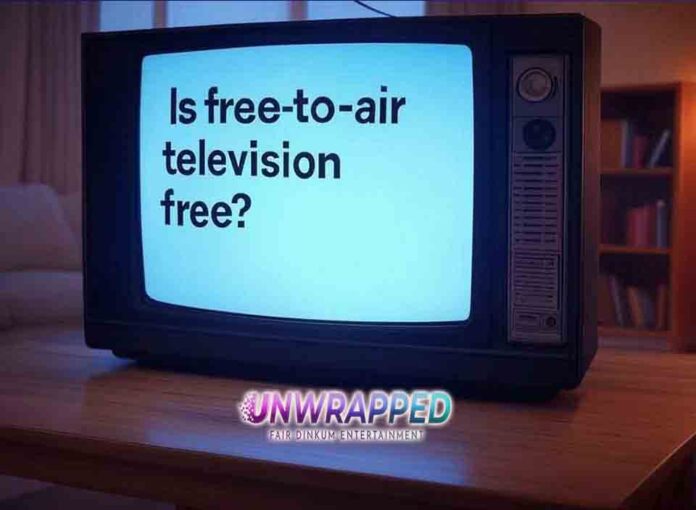Free-to-air television has been a staple of entertainment and information for decades, offering households access to a variety of channels without the need for a subscription. But how free is “free-to-air” TV, really? In this article, we’ll explore the concept, discuss what makes it free, and address any hidden costs or requirements that might come with it.
What Is Free-to-Air Television?
Free-to-air (FTA) television refers to broadcast channels that can be accessed without requiring a subscription or special hardware beyond a TV antenna. It’s a public service in many countries, often funded through government initiatives, licensing fees, or advertising revenue.
Key Features of Free-to-Air TV:
- No Subscription Fees: Unlike cable or streaming services, FTA TV does not charge recurring fees.
- Universal Access: Available to anyone with the necessary equipment, like an antenna and a compatible television.
- Diverse Content: Offers a mix of news, entertainment, sports, and educational programming.
How Does Free-to-Air Television Work?
FTA television operates using terrestrial signals broadcast over the airwaves, which are then received by your TV via an antenna. These signals are transmitted in digital format in most parts of the world today, replacing the older analog system.
The Technology Behind It:
- Transmission Towers: Broadcasters send signals from transmission towers to a wide area.
- Digital Tuners: Most modern TVs come with built-in tuners to decode these digital signals.
- Antenna: The antenna captures the signal and transmits it to the TV for display.
Pro Tip: If your TV doesn’t have a built-in digital tuner, you can use an external set-top box to access free-to-air channels.
Is Free-to-Air Television Really Free?
Yes, free-to-air TV is free in the sense that you don’t pay subscription fees to access its channels. However, there are some costs involved in setting it up and maintaining it.
Costs Associated with FTA TV:
- Initial Equipment:
- Antenna: Prices vary, but a basic indoor antenna can cost $20–$50, while outdoor antennas range from $50–$200.
- TV with Digital Tuner: Most modern TVs include this feature, but older models may require a set-top box ($30–$100).
- Installation:
- Setting up an outdoor antenna may require professional installation, which can cost $100–$300.
- Power Usage:
- Your TV and antenna require electricity, but the cost is minimal compared to subscription services.
Funding for Free-to-Air TV:
FTA broadcasters rely on advertising, government subsidies, or licensing fees to cover operational costs. For example:
- In the UK, the BBC is funded by a license fee paid by households.
- In Australia, free-to-air channels like ABC and SBS receive government funding, while commercial networks rely on ads.
Benefits of Free-to-Air Television
FTA television remains a popular choice for millions worldwide due to its accessibility and affordability. Here’s why:
1. Cost-Effective
FTA TV offers a zero-subscription model, making it ideal for budget-conscious viewers.
2. Local Content
Many FTA channels focus on local news, weather, and community events, making them highly relevant to their audience.
3. Sports and Special Events
Major sporting events, award shows, and national celebrations are often broadcast on FTA channels, ensuring widespread access.
4. Reliable During Emergencies
Unlike internet-based services, FTA TV remains operational during emergencies when internet or cable services may fail.
5. No Internet Required
FTA TV works independently of internet connections, making it accessible in remote or rural areas.
Free-to-Air Television Around the World
Free-to-air television varies by country, with each region offering its unique mix of channels and programming.
Australia
- Channels: ABC, SBS, Seven, Nine, Ten.
- Streaming: Many networks offer free streaming platforms like ABC iview and 9Now.
United States
- Channels: ABC, CBS, NBC, FOX, PBS.
- Availability: The FCC mandates free access to these networks.
United Kingdom
- Channels: BBC, ITV, Channel 4, Channel 5.
- Funding: BBC is funded through a license fee, while others rely on advertising.
Canada
- Channels: CBC, CTV, Global.
- Access: Free-to-air channels are widely available through antennas.
Global Access
Many countries offer free-to-air television as part of their public broadcasting system. Platforms like Freeview (UK) and Free-to-Air TV Australia provide easy access to listings and streaming options.
Challenges of Free-to-Air Television
While FTA TV offers numerous benefits, it’s not without its limitations:
Limited Channel Selection
FTA channels offer fewer options compared to cable or streaming services.
Geographic Restrictions
Reception quality may vary based on your location. Remote areas might require more expensive outdoor antennas.
No On-Demand Features
Unlike streaming platforms, FTA TV typically lacks on-demand viewing options, making it less convenient for some viewers.
How to Maximize Your Free-to-Air Experience
- Invest in a Good Antenna: High-quality antennas ensure better reception and access to more channels.
- Explore Free Streaming Apps: Many FTA networks offer free apps for streaming live TV and on-demand content.
- Combine with Other Free Services: Pair FTA TV with platforms like YouTube or Tubi for a comprehensive viewing experience.
Frequently Asked Questions
Q: Can I watch free-to-air TV without an antenna?
A: Some networks offer live-streaming through apps, but for traditional FTA broadcasts, an antenna is necessary.
Q: Do I need internet for free-to-air TV?
A: No, internet is not required for FTA TV, though it’s needed for streaming apps provided by some networks.
Q: How many channels can I get with FTA TV?
A: This depends on your location and the quality of your antenna. Urban areas typically have access to more channels.
The Future of Free-to-Air Television
Despite the rise of streaming platforms, free-to-air TV remains relevant, thanks to its accessibility and public service role. Innovations like digital broadcasting and hybrid models (combining FTA with streaming) ensure its continued presence in the entertainment landscape.
What to Expect:
- Expanded Digital Services: Enhanced picture quality and additional channels.
- Integrated Apps: Broadcasters offering on-demand content alongside live programming.
- Global Collaboration: Initiatives to make FTA TV more accessible worldwide.
Conclusion: Is Free-to-Air Television Free?
Yes, free-to-air television is free, but with minimal setup costs and occasional maintenance expenses. It remains one of the most cost-effective and accessible ways to enjoy quality entertainment, news, and sports. Whether you’re using it as your primary viewing option or pairing it with streaming services, FTA TV continues to deliver value for households worldwide.
If you found this article helpful, share it with your friends or explore free-to-air options in your area. Happy viewing!
See Also: Where can I watch NRL live?










